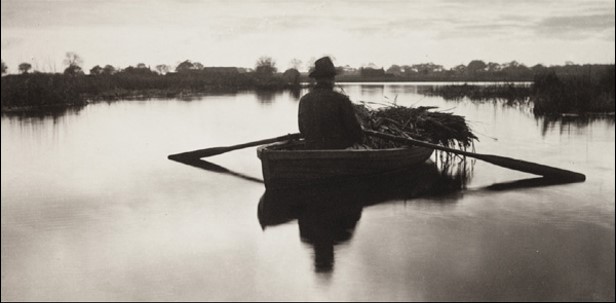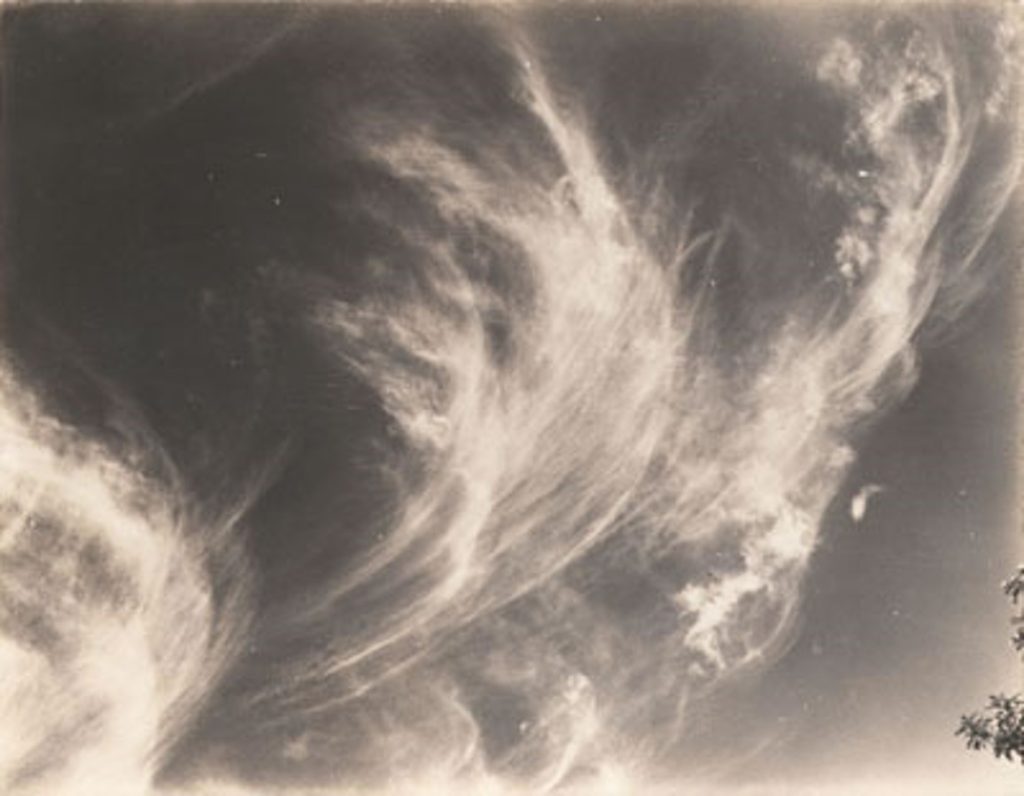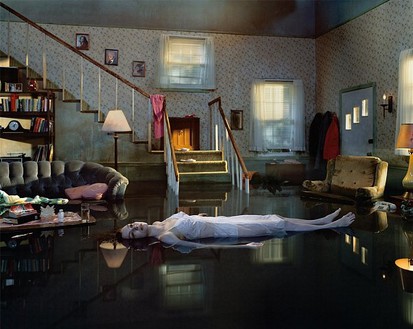Art Movements & Isms
Pictorialism
From the 1880s and onwards photographers strived for photography to be art by trying to make pictures that resembled paintings e.g. manipulating images in the darkroom, scratching and marking their prints to imitate the texture of canvas, using soft focus, blurred and fuzzy imagery based on allegorical and spiritual subject matter, including religious scenes.
Pictorialism reacted against mechanization and industrialisation. They abhorred the snapshot and were also dismayed at the increasing industrial exploitation of photography and practices that pandered to a commercial and professional establishment.
The Pictorialists championed evocative photographs and individual expression and they constructed their images looking for harmony of matter, mind and spirit; the first was addressed through objective technique and process, the second in a considered application of the principles of composition and design, and the last by the development of a subjective and spiritual motive.

Time period :
1880s-1920s
Key characteristics/ conventions :
trying to make photography more of an accepted art form.
1880s’- Photography was seen as less serious, photography is a optical process, the painters, sculptures saw photography as a quick way to create art (lazy). Painting, sculptures etc saw photography as a threat as they would’ve had to spend years on their practice.
Kodak- box camera, photography became popular and easy…
Machine process, was believed to be an unhuman art form so not accepted.
Influences:
Allegorical paintings
Allegory is a figurative mode of representation conveying meaning other than the literal. Allegory communicates its message by means of symbolic figures, actions or symbolic representation. The underlying meaning has moral, social, religious, or political significance, and characters are often personifications of abstract ideas as charity, greed, or envy. Allegorical painting was dominant in Italian Renaissance art in 16th and continued to be a popular up until the Pre-Raphaelite Brotherhood in the mid 19th century.





Peter Henry Emmerson- Emerson’s Naturalistic Photography
In 1889 Peter Henry Emerson (1856-1936) expounded his theory of Naturalistic Photography which the Pictorialist used to promote photography as an art rather than science. Their handcrafted prints were in visual opposition to the sharp b/w contrast of the commercial print



Artists associated:
Alfred Stieglitz



Clarence H White- represents female clothes, landscape

Frank Eugene- represents women sexualised, male gaze, naked.


Key works:
Methods/ techniques/ processes:
scratching the negatives- create fake brush strokes
Vaseline on the lenses – blurry, dream like
chemical process- in the dark room place tint over negative… manipulate tonality.
Realism/ straight photography
Straight Photography…were photographers who believed in the intrinsic qualities of the photographic medium and its ability to provide accurate and descriptive records of the visual world. These photographers strove to make pictures that were ‘photographic’ rather than ‘painterly’, they did not want to treat photography as a kind of monochrome painting. They abhorred handwork and soft focus and championed crisp focus with a wide depth-of-field. Realism… (closely associated with ‘straight photography’) photography grew up with claims of having a special relationship to reality, and its premise, that the camera’s ability to record objectively the actual world as it appears in front of the lens was unquestioned. This supposed veracity of the photographic image has been challenged by critics as the photographer’s subjectivity (how he or she sees the world and chooses to photograph it) and the implosion of digital technology challenges this notion opening up many new possibilities for both interpretation and manipulation. A belief in the trustworthiness of the photograph is also fostered by the news media who rely on photographs to show the truth of what took place.
Time period:
1915- modern day
Key characteristics/ conventions :
Capturing things as they are
creating an abstract art from through shape.
Observations.
detailed sharply focused photos without manipulation.
Influences:
Cubism


Paul strand – cubism
people wanted to go back to the documentary side of photography
Artists associated:


Paul strand

Stieglitz
Paul Strand and Alfred Stieglitz pioneered Straight photography in New York while the Hungarian-born László Moholy Nagy exploited pure photography to maximize the graphic structure of the camera-image. These straight or pure approaches to photography continue to define contemporary photographs, while being the foundation for many related movements, such as Documentary, Street photography, Photojournalism, and even later Abstract photography.
walker evans
“To photography truthfully and effectively is to see beneath the surfaces and record the qualities of nature and humanity which live or aren’t latent in all things”
Edward western
Key works:
Straight photography emphasizes and engages with the camera's own technical capability to produce images sharp in focus and rich in detail. The term generally refers to photographs that are not manipulated, either in the taking of the image or by darkroom or digital processes, but sharply depict the scene or subject as the camera sees it.
Methods/ techniques/ processes:
Modernism
Time period:
Key characteristics/ conventions :
Artists associated:
Key works:
Methods/ techniques/ processes:
Post Modernism
Postmodernism was the collective name given
to the shattering of modernism. In
photography this was the direct challenge to
the ideal of fine art photography whose values
were established on an anti-commercial stance.
At the end of 1970s artists suddenly began to
use the codes and conventions of commercial
photography against itself
Postmodernists see all kinds of things as text, including photographs, and insist that all texts need to be read critically. For postmodernists a text is different from modernists’ notion of a work. A work is singular, speaking in one voice, that of the author, which leads the reader to look for one meaning. For postmodernists many readings (interpretations and understandings) of a text or a work of art are desirable - no single reading can be conclusive or complete. Postmodernism also explores power and the way economic and social forces exert that power by shaping the identities of individuals and entire cultures. Unlike modernists, postmodernists place little or no faith in the unconscious as a source of creative and personal authenticity. They value art not for universality and timelessness but for being imperfect, low-brow, accessible, disposable, local and temporary. While it questions the nature and extent of our freedom and challenges our acquiescence to authority, Postmodernism has been criticised for its pessimism: it often critiques but equally often fails to provide a positive vision or redefinition of what it attacks.
2nd world war disrupted modernity project. Anything that was new at beginning of 20th century e.g. tech, knowledge - Modernity used industrial revolution - industrial revolution turned humans against each other e.g. war, bombs, nuclear weapons - sceptics, no belief, no universal truth, - Post modern art, underlined as political motivation.
While reproduction is photography’s main
contribution to postmodernist practice, a
photograph is also readily adaptable; it can
be blown up, cropped, blurred, used in
newspapers, in a book, on a billboard. Other
formal devises used by postmodernists
practitioners are seriality, repetition,
appropriation, simulation or pastiche (which
is opposite to principles of modernity: the
autonomy, self-referentiality and
transcendence of the unique and precious
work of art.)
Time period:
1960s- now
university’s, America and Europe, people begin questioning the failing modernity project.
Key characteristics/ conventions :
Postmodernism makes references to things outside the
art work…e.g. political, cultural, social, historical,
psychological issues
Postmodernism favours the context of a work including
examining subject and the reception of the work by its
audience.
Postmodern work are aware of and make reference to
the previously hidden agendas of the art market and its
relation to art museums, dealers and critics;
Postmodern work often uses different approaches in the
construction of the work such as…eclecticism,
intertextuality, collaboration, pastiche, parody, recycling,
reconfiguration, bricolage
Artists associated:
Cindy Sherman
Her numerous alter egos cast doubts upon a definitive sense of self, and her copies of sourceless material subscribe to postmodernism's claim that originality has ceased. Deconstructing the myths we have about ourselves and our surroundings, Sherman's work is an ideal example of postmodern art.



Richard Prince



Barbara Kruger
Associated with postmodern Feminist art as well as Conceptual art, Kruger combines tactics like appropriation with her characteristic wit and direct commentary in order to communicate with the viewer and encourage the interrogation of contemporary circumstances.



Sherrie Levine
Where is originality? Parody of walker Evans
In 1981, Levine photographed reproductions of Depression-era photographs by Walker Evans, such as this famous portrait of Allie Mae Burroughs, the wife of an Alabama sharecropper. The series, entitled After Walker Evans, became a landmark of postmodernism, both praised and attacked as a feminist hijacking of patriarchal authority, a critique of the commodification of art, and an elegy on the death of modernism. Far from a high-concept cheap shot, Levine’s works from this series tell the story of our perpetually dashed hopes to create meaning, the inability to recapture the past, and our own lost illusions.

Laurie Simmons
Martha Rosler
Walter Benjamin
In the 1930s, cultural theorists, Walter
Benjamin wrote two essays on photography
that are frequently cited by current critics.
In these essays Benjamin stressed aspects
of the photographic medium different from
those that modernist photographers, like
Paul Strand and Edward Weston were
advocating. While they heralded the
honesty of the medium and the infinite
detail of the negative and the beautiful
photographic print, Benjamin pointed out,
that unlike the painting, the photograph is
infinitely reproducible.
Key works:
Tableaux-
Tableaux photography is a style of photography in which a pictorial narrative is conveyed through a single image as opposed to a series of images which tell a story such as in photojournalism and documentary photography. This style is sometimes also referred to as ‘staged’ or ‘constructed photography’ and tableaux photographs makes references to fables, fairy tales, myths and unreal and real events from a variety of sources such as paintings, film, theatre, literature and the media. Other tableaux photographs offer a much more ambiguous and open-ended description of something that are subjective to interpretation by the viewer. Tableaux photographs are mainly exhibited in fine art galleries and museums where they are considered alongside other works of art. Tableau photography involves a performance enacted before the camera and embraces studio portraiture and other more or less elaborate peopled scenarios in constructed settings directed or manipulated by the photographer to suggest a story. The word tableau derives from tableaux vivant (plural) which in French means ‘living picture’ and the term describes staged groups of artist’s models often using dramatic costumes, carefully posed, motionless without speaking and theatrically lit, recreating paintings ‘on stage’. Before radio, film and television, tableaux vivants were popular forms of entertainment in the Victorian and Edwardian era.




tenten